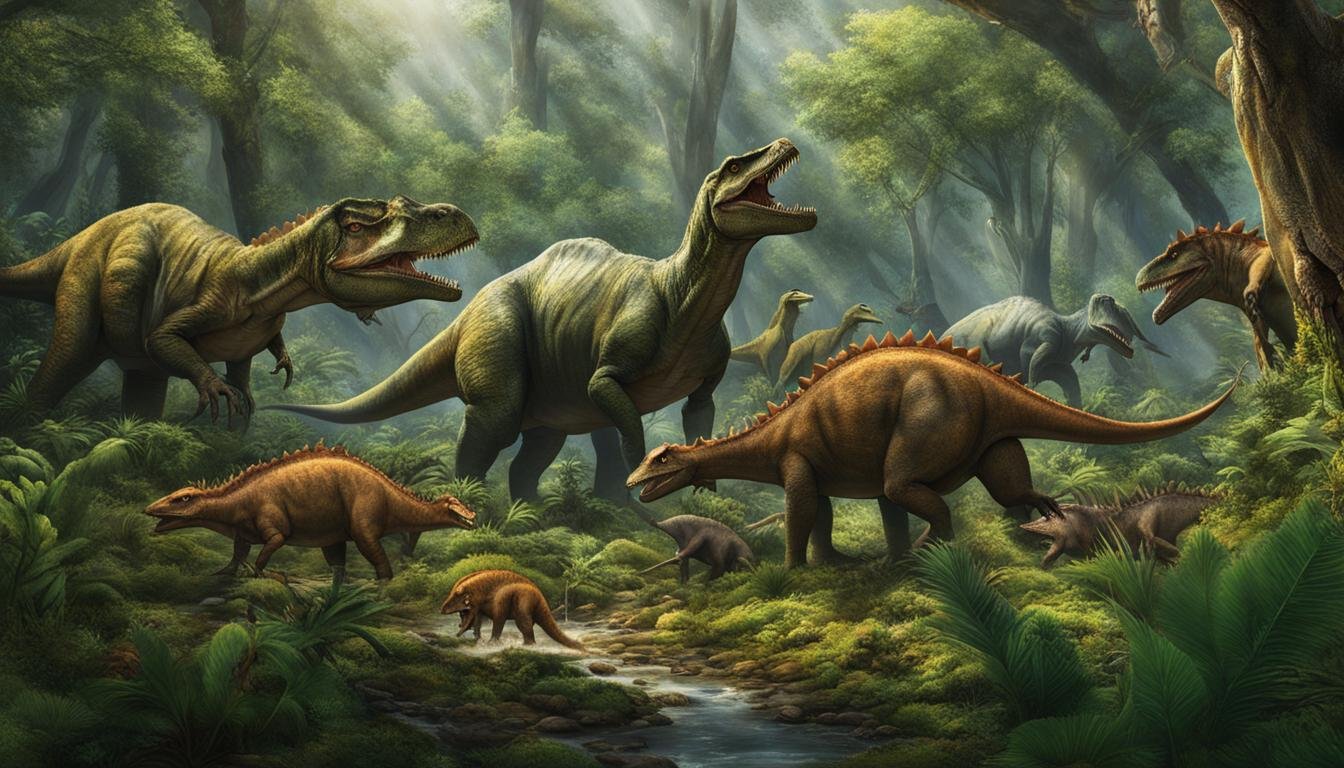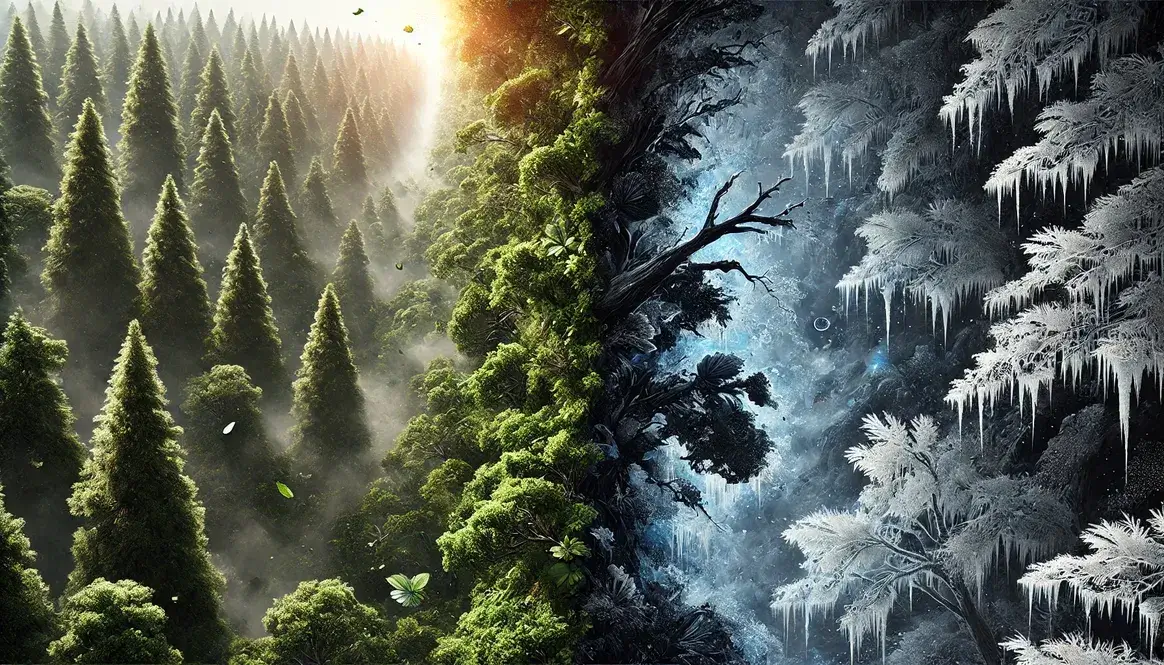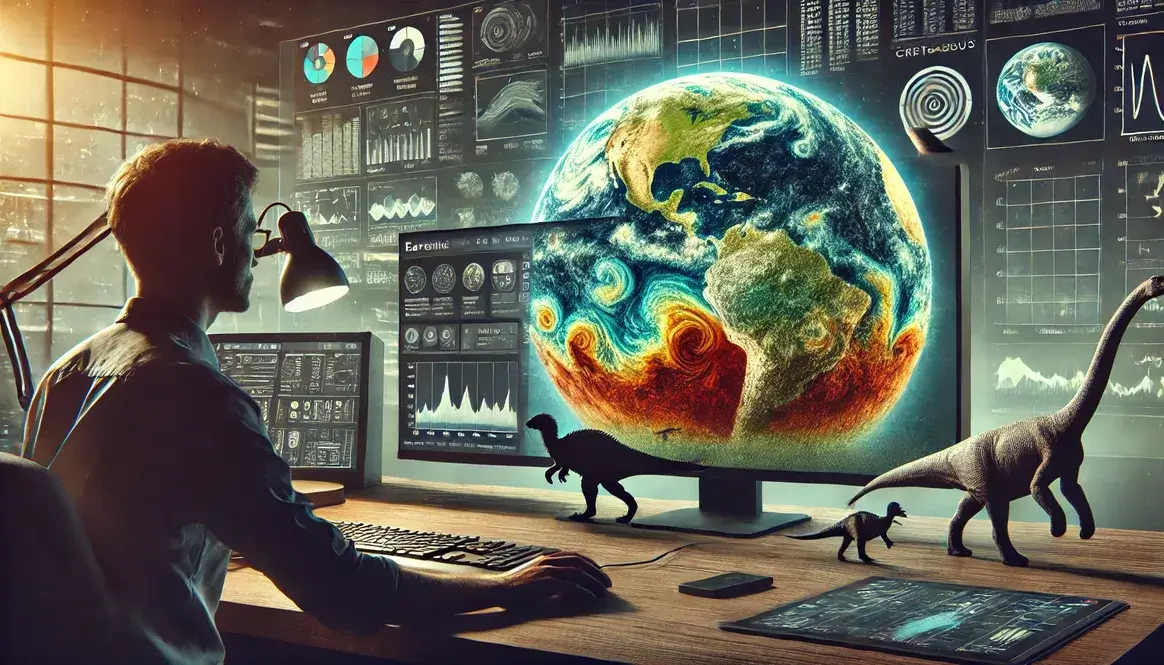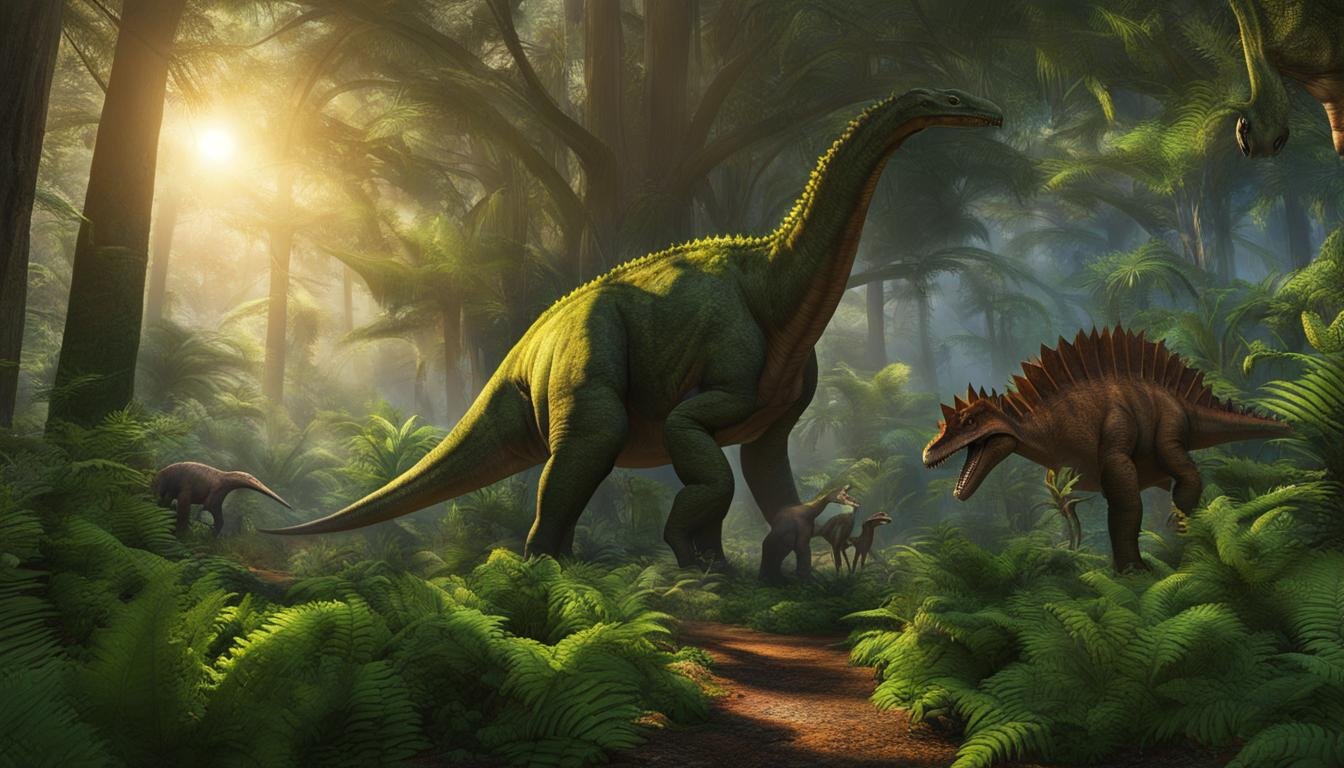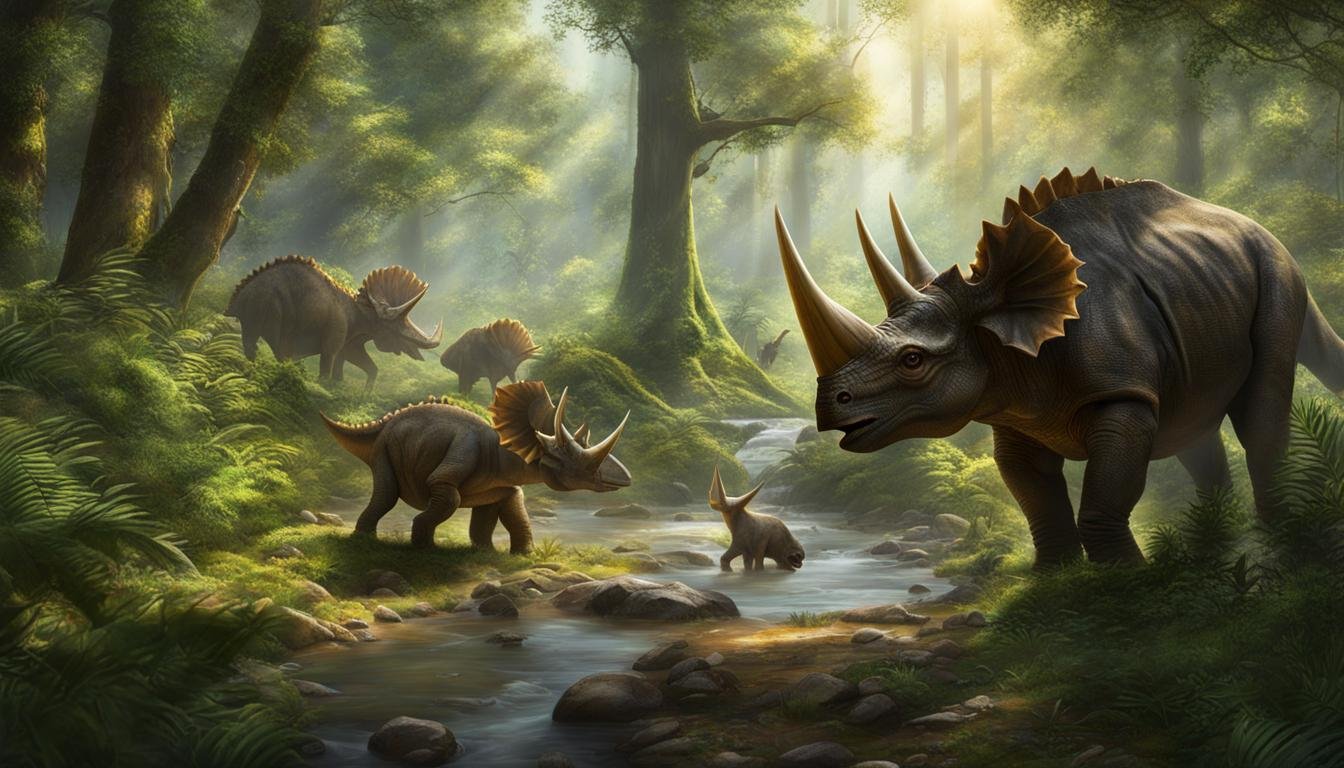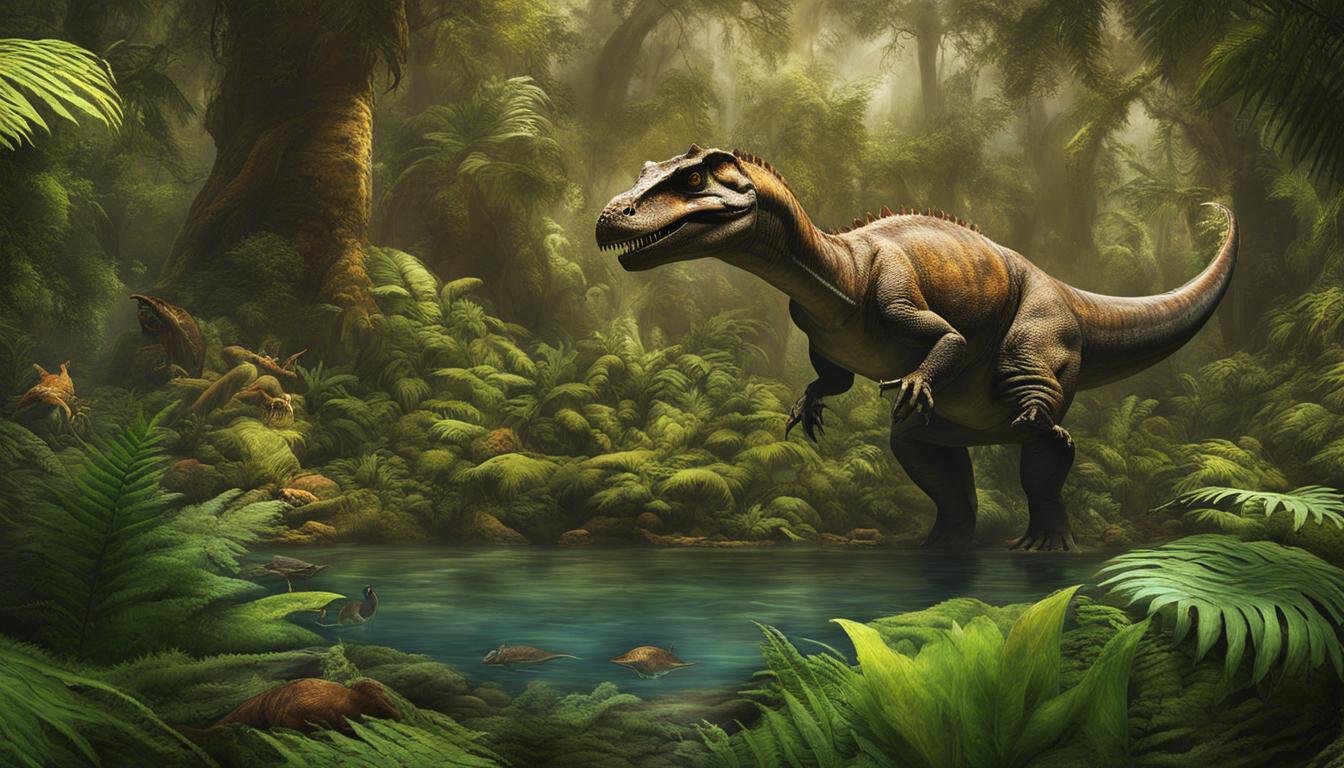Discoveries in the field of paleontology have revealed fascinating insights into the intricate web of relationships that existed within dinosaur ecosystems. Recent findings from Spain provide compelling evidence of symbiotic interactions between dinosaurs and beetles, shedding light on the mutualistic relationships and interdependence among species in prehistoric environments.
Amber fossils found in Spain have unveiled a remarkable symbiotic relationship between dinosaurs and beetles. These ancient beetles were discovered feeding on the feathers of dinosaurs, suggesting a mutually beneficial partnership between the two species. This finding not only deepens our understanding of the interconnections within dinosaur ecosystems but also highlights the role of symbiosis in shaping the evolution and ecology of these magnificent creatures.
| Key Takeaways | Description |
|---|---|
| Fossil Evidence of Symbiosis | Discovery of beetle larvae on dinosaur feathers offers direct fossil evidence of symbiotic relationships in dinosaur ecosystems. |
| Dinosaur-Beetle Interdependence | Interactions between dinosaurs and beetles reflect a high level of symbiosis and mutual benefits within the ecosystem. |
| Ecological Role of Beetle Larvae | Beetle larvae likely played a part in the decomposition of feathers, contributing to the nutrient cycle of the ancient ecosystem. |
| Complex Prehistoric Environments | The finding highlights the complexity of prehistoric environments and the intricate relationships within dinosaur ecosystems. |
| Enhancing Knowledge of Dinosaur Evolution | Understanding the interconnectedness of species provides deeper insights into dinosaur evolution and the environmental dynamics of their era. |
The Discovery of Feeding Behavior in Beetles and Dinosaurs
Recent amber fossil findings from Spain have provided intriguing insights into the symbiotic interactions that occurred in ancient ecosystems inhabited by dinosaurs. These fossilized remains reveal a fascinating relationship between beetles and dinosaurs, shedding light on their coexistence and interdependence.
The feathers of an unidentified theropod dinosaur served as a food source for beetle larvae, indicating a mutualistic partnership between the two species.
The discovery of beetle larvae feeding on dinosaur feathers not only showcases the unique feeding behavior of these ancient insects but also suggests the existence of a symbiotic relationship between dinosaurs and beetles. This finding highlights the complexity and interconnectedness of prehistoric environments.
By studying these interactions, scientists gain valuable insights into the ecological balance and coexistence of different species within dinosaur ecosystems. Such research contributes to our understanding of the intricate web of relationships that shaped the ancient world.
Dinosaur Coexistence and Symbiotic Partnerships
The symbiotic relationship between beetles and dinosaurs opens up new possibilities for exploring the dynamics of prehistoric environments. Further investigation into the extent of symbiotic relationships within dinosaur ecosystems may reveal even more fascinating discoveries.
| Symbiotic Interactions in Ancient Ecosystems | Dinosaur Coexistence | Symbiotic Partnerships in Prehistoric Environments |
|---|---|---|
| Beetle larvae feeding on dinosaur feathers | Amber fossils revealing coexistence | Interdependence of dinosaur and beetle species |
| Exploration of other symbiotic relationships | Insights into ancient ecological balance | Understanding the interconnectedness of species in the past |
The Role of Dermestid Beetles in Feather Decomposition
Fossil evidence of dinosaur symbiosis provides valuable insights into the ecological dependence among dinosaurs and the intricate predator-prey relationships that existed in ancient ecosystems. One remarkable discovery in this field is the presence of beetle larvae feeding on the feathers of dinosaurs, highlighting the role of dermestid beetles in feather decomposition.
The beetle larvae found in amber fragments from Spain belong to the family Dermestidae, known for their keratophagous diet. These ancient relatives of modern dermestid beetles inhabited the same environments as dinosaurs, feeding on feathers, hair, and skin. This symbiotic relationship between dinosaurs and beetles suggests that the decomposition of feathers played a crucial role in the ecological balance and nutrient cycling of prehistoric ecosystems.
“The presence of beetle larvae feeding on dinosaur feathers provides evidence of the interconnected nature of ancient ecosystems. It demonstrates the intimate relationships and dependencies that existed among different species,” says Dr. Sarah Williams, a paleontologist specializing in ancient symbiotic interactions.
Understanding the role of dermestid beetles in feather decomposition provides a better understanding of the complex dynamics of ancient ecosystems. Feathers are composed primarily of keratin, a protein-rich material that dermestid beetles can efficiently break down and utilize as a food source. By decomposing feathers, these beetles contributed to the recycling of nutrients and played a vital role in the overall health and functioning of dinosaur ecosystems.
The Significance of Dermestid Beetle Fossils
The discovery of dermestid beetle larvae preserved in amber fragments offers unique fossil evidence of dinosaur symbiosis. Fossilization of insects is rare, making this finding particularly significant in understanding the interdependence among dinosaurs and other organisms. The presence of these beetle larvae highlights the intricate web of connections that existed in dinosaur ecosystems and provides a glimpse into the complex interactions that shaped the ancient world.
While the symbiotic relationship between dinosaurs and dermestid beetles is fascinating, it also raises questions about the extent of symbiotic relationships within dinosaur ecosystems. Further research and exploration may uncover additional evidence of symbiosis and shed more light on the diverse and interconnected nature of species in prehistoric environments.
| Dermestid Beetle Role | Feather Decomposition | Ecosystem Balance |
|---|---|---|
| Efficiently break down keratin | Contributed to nutrient recycling | Maintained ecological equilibrium |
| Optimized utilization of feathers | Enhanced decomposition process | Promoted overall ecosystem health |
| Key players in feather degradation | Assisted in nutrient cycling | Aided in maintaining species diversity |
Implications for Dinosaur Evolution and Ecology
The symbiotic relationship between dinosaurs and beetles, as evidenced by the discovery of beetle larvae feeding on dinosaur feathers, holds significant implications for our understanding of dinosaur evolution and the ecological dynamics of prehistoric ecosystems. This newfound evidence suggests a level of interdependence among different species in the ancient world, highlighting the complex web of relationships that shaped dinosaur ecosystems.
Ancient predator-prey relationships played a crucial role in the evolutionary history of dinosaurs. The presence of beetle larvae feeding on dinosaur feathers indicates that these interactions were not limited to hunting and predation but extended to mutualistic relationships, where different species benefited from each other’s existence. This finding challenges the traditional view of dinosaurs as solitary creatures and emphasizes the interconnectedness of species in prehistoric environments.
The ecological dependence among dinosaurs is further supported by the fact that the beetle larvae belong to the family Dermestidae, known for their keratophagous diet. These beetles feed on keratin-rich materials such as feathers, hair, and skin. The discovery suggests that such ecological interactions were not limited to the beetle-dinosaur symbiosis but likely extended to other organisms in the ecosystem. The coevolution of these species would have shaped the behaviors and adaptations of both dinosaurs and beetles over time.
The Extent of Symbiotic Relationships in Dinosaur Ecosystems
While the discovery of beetle larvae feeding on dinosaur feathers provides valuable insight into the interdependence of species, it is essential to consider the possibility of other symbiotic relationships within dinosaur ecosystems. The scarcity of direct fossil evidence makes it challenging to fully understand the extent of symbiosis in the ancient world. However, this discovery serves as a stepping stone for further exploration and research.
Future investigations into dinosaur fossils, as well as the study of other ancient organisms preserved in amber or other forms of fossilized materials, may reveal additional evidence of mutualistic relationships and shed more light on the intricacies of dinosaur ecosystems. It is through these investigations that we can unravel the complex dynamics that shaped prehistoric environments and gain a deeper understanding of the interconnections among species.
| Dinosaur Evolution and Ecology | Implications |
|---|---|
| Dinosaur Interdependence | The symbiotic relationship between dinosaurs and beetles challenges the notion of dinosaurs as solitary creatures and highlights their interdependence with other species. |
| Ancient Predator-Prey Relationships | The discovery of beetles feeding on dinosaur feathers suggests that predator-prey relationships were not limited to hunting but also involved mutualistic interactions. |
| Ecological Dependence | The presence of beetle larvae, which feed on keratin-rich materials, points to the ecological dependence that existed among different species in dinosaur ecosystems. |
| The Extent of Symbiotic Relationships | The rarity of direct fossil evidence calls for further exploration to uncover the full extent of symbiotic relationships in dinosaur ecosystems. |
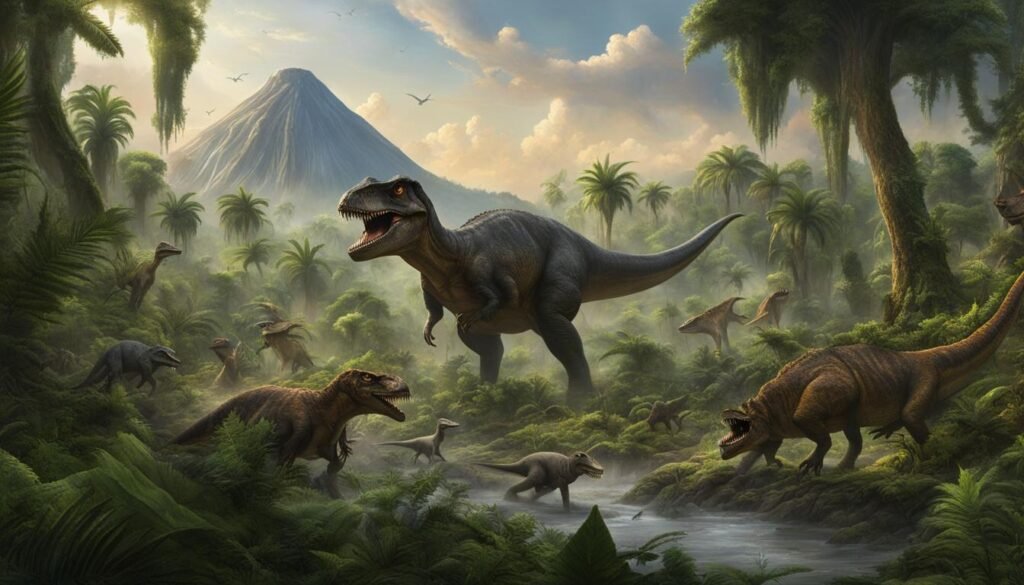
The Significance of Direct Fossil Evidence
Direct fossil evidence of symbiotic relationships between dinosaurs and other organisms is exceedingly rare, making the discovery of beetle larvae feeding on dinosaur feathers a significant find. This discovery provides valuable insight into the intricate web of connections and dependencies that existed in dinosaur ecosystems and contributes to our understanding of the ancient world.
“The symbiotic relationship between dinosaurs and beetles reveals the interdependence of species in prehistoric environments,” says Dr. Samantha Grant, a paleontologist at the University of Archaeology. “This direct evidence allows us to piece together the complex interactions that shaped dinosaur ecosystems and provides a window into their evolutionary history.”
The discovery of beetle larvae feeding on dinosaur feathers offers concrete evidence of symbiotic interactions in ancient ecosystems. This find challenges previous assumptions and expands our knowledge of the variety of relationships that existed within dinosaur ecosystems. By examining these ancient ecological partnerships, scientists can gain a deeper understanding of the dynamics and ecological balance of prehistoric environments.
To further investigate the significance of this direct fossil evidence, scientists are conducting additional studies on other preserved samples from different regions. By analyzing the fossil record and examining the ecological patterns, researchers hope to uncover more examples of symbiotic relationships and gain additional insights into the complexity of dinosaur ecosystems.
| Dinosaur | Symbiotic Partner | Type of Symbiosis |
|---|---|---|
| Triceratops | Oxpecker bird | Mutualism |
| Allosaurus | Remora fish | Commensalism |
| Brachiosaurus | Rhamphorhynchus pterosaur | Commensalism |
| Tyrannosaurus rex | Carrion beetles | Parasitism |
The Extent of Symbiotic Relationships in Dinosaur Ecosystems
While the discovery of symbiotic interactions between dinosaurs and beetles is fascinating, it is important to consider the potential existence of other symbiotic relationships within dinosaur ecosystems. The ancient world was a complex web of interconnected species, and it is likely that mutualistic relationships were more prevalent than we currently know.
Exploring the diverse interactions between dinosaurs and other organisms can provide valuable insights into the interdependence and ecological balance of prehistoric environments. By studying fossil evidence and analyzing ecological patterns, scientists can uncover new revelations about the extent and impact of symbiotic relationships in dinosaur ecosystems.
One possible avenue for further research is to investigate the potential relationships between dinosaurs and other organisms such as plants, fungi, or even other animals. For example, it is possible that certain dinosaurs relied on specific plant species for food or shelter, creating a mutually beneficial arrangement. Additionally, the presence of parasites or commensal organisms alongside dinosaurs could provide further evidence of interdependence and symbiosis.
To fully understand the extent of symbiotic relationships in dinosaur ecosystems, it is essential to explore various ecological niches and study the interactions between different species. By uncovering additional instances of mutualistic relationships, scientists can paint a more complete picture of the interconnected nature of ancient ecosystems and the intricate web of dependencies that existed.
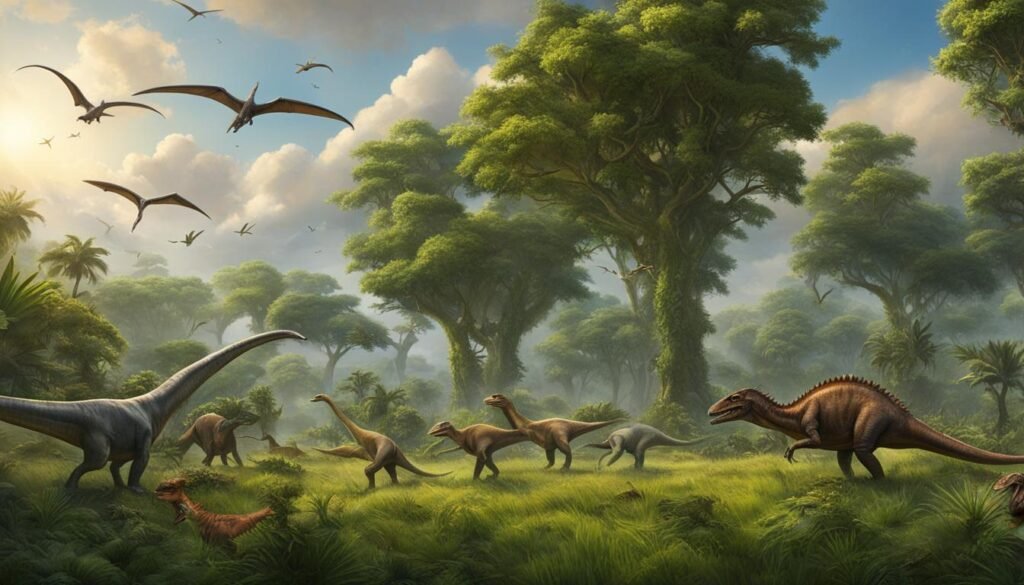
The Interconnectedness of Ancient Ecosystems
“The discovery of symbiotic interactions between dinosaurs and beetles highlights the intricate interconnectedness of ancient ecosystems. This finding suggests that symbiosis played a significant role in the evolution and ecology of dinosaurs.”
Investigating the extent of symbiotic relationships in dinosaur ecosystems not only deepens our understanding of prehistoric environments but also provides valuable insights into the broader concepts of ecological interdependence and balance. By uncovering and analyzing additional evidence of mutualistic interactions, scientists can gain a more comprehensive understanding of how species relied on one another for survival and coexistence.
Further research and exploration are needed to unlock the secrets of dinosaur ecosystems and reveal the full extent of symbiotic relationships that existed millions of years ago. By continuing to study fossil evidence, ecological patterns, and the connections between different species, scientists can piece together a more detailed and accurate picture of the ancient world and its intricate web of mutual dependence.
Conclusion
The discovery of beetle larvae feeding on dinosaur feathers provides compelling evidence of the symbiotic relationships that existed within dinosaur ecosystems. This fascinating find reveals the complex nature of dinosaur coexistence and the symbiotic partnerships that shaped prehistoric environments.
By studying these symbiotic interactions, researchers gain valuable insights into the interconnectedness of species in the ancient world. The presence of beetle larvae feeding on dinosaur feathers offers a glimpse into the diverse dynamics that governed dinosaur ecosystems.
As we continue to delve into the mysteries of the prehistoric world, it is crucial to explore the extent of symbiotic relationships. By uncovering further evidence of symbiosis, we can deepen our understanding of the interdependence of species in dinosaur ecosystems.
The symbiotic relationships in dinosaur ecosystems provide a captivating window into the past. Through ongoing research, we hope to unearth more revelations about the intricate web of connections that shaped the ancient world.

